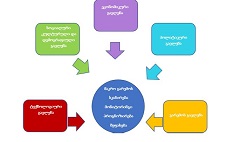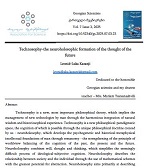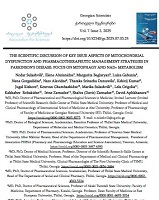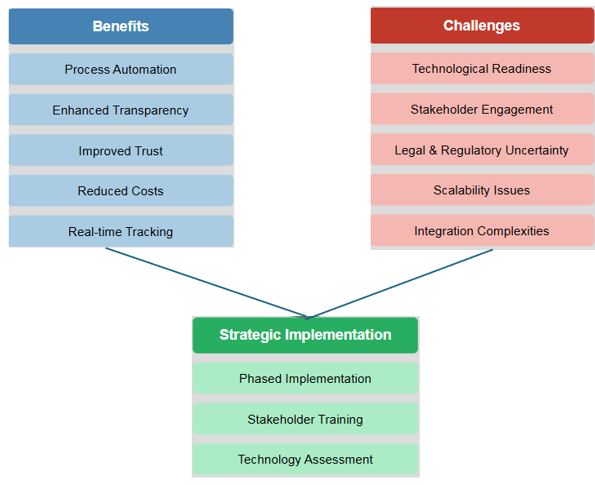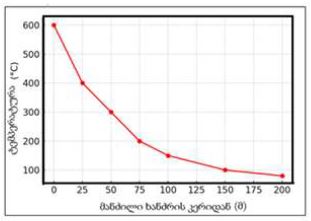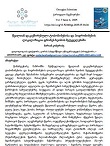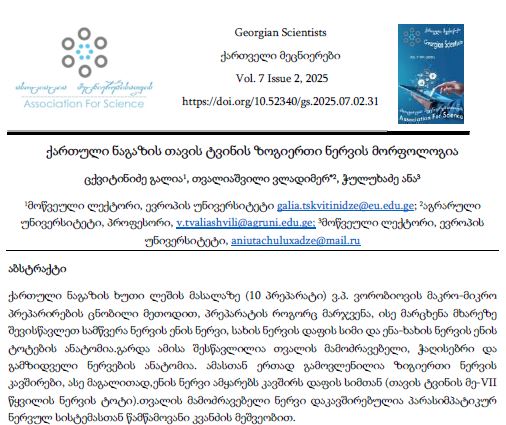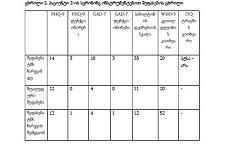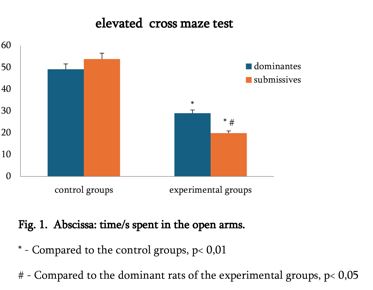Word Formation in University-Level German Language Instruction – An Essential Interface Between Vocabulary and Grammar
Downloads
Word formation is one of the most productive and creative areas of the German language. As a central level between vocabulary and grammar, it plays an essential role in the acquisition of German as a foreign language, as it enables learners to gain insight into the structure and meaning of words. The aim of this paper is to demonstrate how the principles of word formation can be taught in university-level DaF (German as a Foreign Language) lessons, so that they are accessible, memorable, and useful in the language learning process. The focus is particularly on compounds and derivatives. As knowledge of word formation is crucial for the comprehension of unfamiliar vocabulary, it can play an important role in the process of text reception. In this context, students should be taught how to identify compounds and determine their Immediate Constituents (ICs). An analysis based on ICs most clearly reveals the structural, semantic, and functional features of compounds. Various morphological structures are identified, such as ICs being simple forms or suffix-/prefix-derived forms. From a semantic perspective, compounds can display a wide range of word formation meanings, including local, temporal, causal, final, and other meanings. For derivatives, we rely on the content-based word formation theory of Weisgerber, who posits that derivational morphemes assume specific functions, connect with the content of the base word, and modify it in a particular way. The same affix can thus convey multiple meanings. To enable students to apply their knowledge of word formation in text reception, it should be reinforced through targeted word formation exercises. Possible exercise types include forming compounds, identifying ICs, analyzing the relationships between them, explaining complex word meanings through paraphrasing, deriving words through suffixes or prefixes, and examining the functions of affixes. However, in many German (DaF) textbooks, word formation is not sufficiently addressed, making the proposed approach potentially innovative. Additionally, dictionaries often lack comprehensive information on word formation, as not all lexical units are included. Therefore, it is crucial for students to possess fundamental knowledge of word formation in order to deduce the meaning of words. However, in electronic dictionaries, word formation is presented in greater detail. Our approach also takes into account wordplay from various text types. Such wordplay can not only help students understand new word formation products but also stimulate creative word production, thereby fostering their linguistic creativity.
Downloads
Aebli, Hans. (2016). Sprachliche Kreativität und Sprachförderung im Unterricht. Stuttgart: Verlag W. Kohlhammer.
Beile, Werner. (2009). Üben und Übungsformen. In: Udo O. H. Jung (Hrsg.) Praktische Handreichung für Fremdsprachenlehrer, 74-81. Frankfurt am Main: Peter Lang.
Bohn, Rainer/Schreiter, Ina. (2000). Wortschatzarbeit. In: Germanistische Linguistik 155-156, S. 57-98.
Elsen, Hilke. (2019). Zum Status der Wortbildung in Lehrwerken für DaF. In: Muttersprache 64. Jahrgang 129. S. 141-157.
Fandrych, Christian/Thurmair, Maria. (1994). Ein Interpretationsmodell für Nominalkomposita: linguistische und didaktische Überlegungen. In: DaF 31, S. 34-45.
Fleischer, Wolfgang/Barz, Irmhild. (2012). Wortbildung der deutschen Gegenwartssprache. Unter Mitarbeit von Marianne Schröder. 4., völlig neu bearbeitete Auflage. Tübingen: De Gruyter.
Gärtner, Angelika. (2012). Wortbildung: Problemfelder im DaF-Unterricht. In: Info Deutsch als Fremdsprache 4. S. 499-513. https://doi.org/10.1515/infodaf-2012-0408
Gerhards, G. (2014). Kreativität im Sprachunterricht: Theorie und Praxis des Wortspiels im DaF-Unterricht. Berlin: De Gruyter.
Glück, Helmut/Rödel, Michael (Hg.). (2016). Metzler Lexikon Sprache. 5. Auflage. Stuttgart: J. B. Metzler Verlag.
Holly, Werner. (1986). Wortbildung und Wörterbuch. In: Lexicographica 2, S. 195-213.
Kieweg, Werner. (2010). Übungsformen. In: Wolfgang Hallet und Frank G. Königs (Hrsg.) Handbuch Fremdsprachendidaktik, 182-186. Seelze-Velber: Kallmeyer.
Klosa, Annette. (2013). Wortbildung in elexiko: Gegenwart und Zukunft. In: Klosa, Annette (Hrsg.): Wortbildung im elektronischen Wörterbuch. Studien zur deutschen Sprache 63. Tübingen: Narr. S. 175-196.
Kruashvili, Irina. (2022). Possibility and Necessity in German Derivatives. Scientific Journal West East. Vol. 8, N1. pp. 9-18. https://doi.org/10.33739/2587-5434-2022-8-1-9-18
Lewandowski, Theodor. (1991). Deutsch als Zweit- und Zielsprache. Handbuch zur Sprachförderung. Trier: Wissenschaftlicher Verlag.
Lindauer, Thomas. (2006). Wortbildung. In: Praxis Deutsch 201 (1), S. 6-15.
Mac, Agnieszka. (2011). Zur Rolle der Wortbildung in ausgewählten DaF-Lehrwerken am Beispiel der Derivation. In: Zielsprache Deutsch 38 (1), S. 3-21.
Mogge, Bernhard. (1982). Von den Schwierigkeiten des Ausländers mit der deutschen Wortbildung. In: Zielsprache Deutsch 2, S. 19-23.
Neveling, Christiane. (2004). Wörterlernen mit Wörternetzen. Eine Untersuchung zu Wörternetzen als Lernstrategie und als Forschungsverfahren. Tübingen: Narr.
Neveling, Christiane. (2020). Wortschatzarbeit. In: Wolfgang Hallet, Frank G. Königs, Hélène Martinez (Hrsg.): Handbuch Methoden im Fremdsprachenunterricht. Hannover: Klett Kallmeyer.
Paul, Hermann. (1920). Deutsche Grammatik. Bd. 5, Teil 4. Wortbildungslehre. Halle (Saale): Max Niemeyer.
Poethe, Hannelore. (2002). Wort(bildungs)spiele. In: Irmhild Barz, Ulla Fix, Gotthard Lerchner (Hrsg.): Das Wort in Text und Wörterbuch. Stuttgart/Leipzig: Verlag der Sächsischen Akademie der Wissenschaften zu Leipzig. S. 23-40.
Rössler, Helmut. (1989). Übungstypen und Motivation im Bereich der textbezogenen Wortschatzvermittlung. In: Jahrbuch Deutsch als Fremdsprache 14, S. 92-119.
Saxer, Robert. (1991). Wortbildung im Sprachunterricht. In: Informationen Deutsch als Fremdsprache 18 (1), S. 55-62.
Storch, Günther. (1999). Deutsch als Fremdsprache - Eine Didaktik. Theoretische Grundlagen und praktische Unterrichtsgestaltung. München: Wilhelm Fink Verlag.
Targońska, Joanna. (2012a). Wozu brauchen Fremdsprachenlernende Wortbildungskenntnisse? Theoretische Überlegungen zu möglichen Einsatzbereichen der Wortbildung im Fremdsprachenunterricht. In: Studia Niemcoznawcze/Studien zur Deutschkunde 49, S. 751-765.
Targońska, Joanna. (2012b). Wortbildungsübungen aus der Sicht der Fremdsprachendidaktik und der DaF-Lernenden.In: Linguistica Silesiana 33. Olsztyn.
Targońska, Joanna. (2013). Wortbildung und Wortbildungsübungen als Forschungsgegenstand der Fremdsprachenlehr- und Lernforschung. In: Acta Neophilologica XV (I). Olsztyn. https://czasopisma.uwm.edu.pl/index.php/an/article/view/861/704
Targońska, Joanna/Jakosz, Mariusz (Hg.). (2024). Wendepunkte in der Fremdsprachenlehr- und -lernforschung. Teil 2. Brill: V&R unipress.
Weisgerber, Leo. (1971). Grundzüge der inhaltbezogenen Grammatik. Düsseldorf: Pädagogischer Verlag Schwann.
Wilmanns, Wilhelm. (1899). Deutsche Grammatik. Gotisch, Alt-, Mittel- und Neuhochdeutsch. 2. Abteilung. Wortbildung. 2. Aufl. Straßburg: Hansebooks.
Lehrmaterialien:
Duden (2016). Die Grammatik. Bd. 9., vollständig überarbeitete und aktualisierte Auflage. Berlin.
Helbig, Gerhard/Buscha, Joachim. (2017). Deutsche Grammatik. Ein Handbuch für den Ausländerunterricht. Stuttgart: Ernst Klett Sprachen.
Koukidis, Spiros. (2017). Die große deutsche Lernergrammatik. Athen: Praxis Spezialverlag DaF.
Copyright (c) 2024 Georgian Scientists

This work is licensed under a Creative Commons Attribution-NonCommercial-NoDerivatives 4.0 International License.























